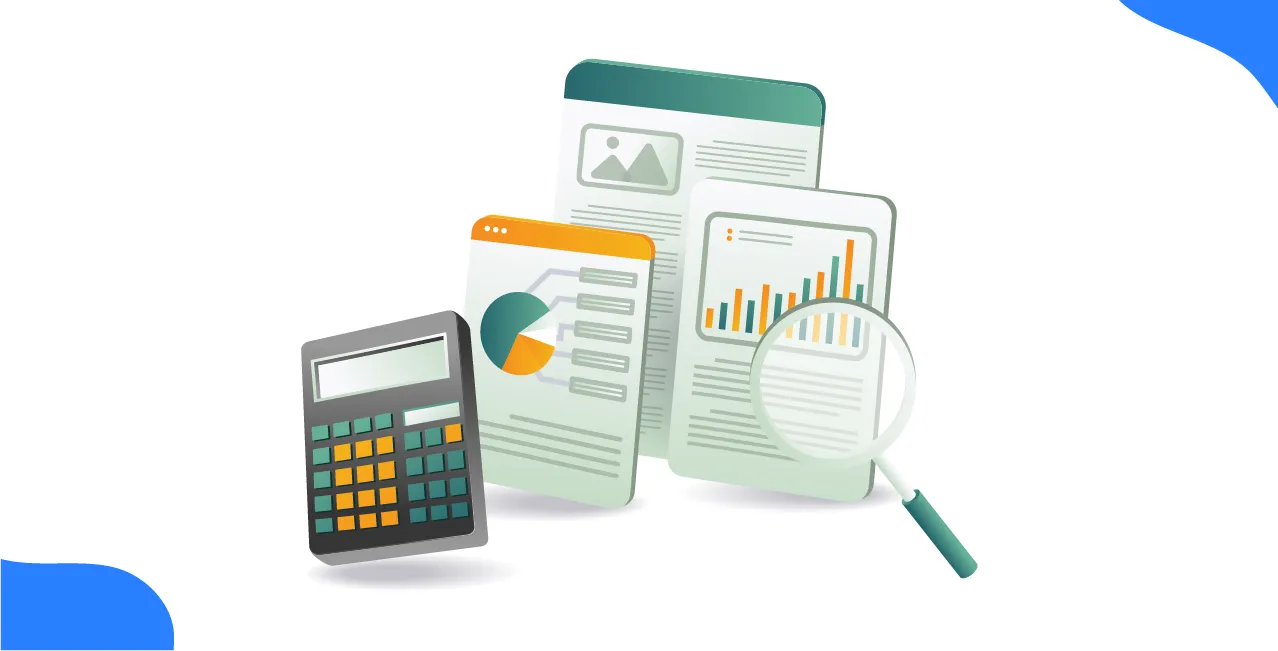
Author
LoansJagat Team
Read Time
6 Min
25 Jul 2025
What is Accounting? Basics, Objectives & Types Explained
Accounting is often referred to as the language of business, and with good reason. Whether owning a small corner business earning ₹50,000 a month or managing a multinational corporation with yearly revenues making ₹5,000 crore, one thing remains constant: keeping track of your money. Every firm has to know how much it earns, how much it spends, and whether it is profitable or losing money.
Here's where accounting comes in. Accounting is the systematic recording, classification, summation, and interpretation of financial transactions. Accounting can display a business's profit before tax as ₹70,000 if it spends ₹20,000 on raw materials, gets ₹1,000,000 from sales, and pays ₹10,000 in salary.
Basics of Accounting
Definition of Accounting
Accounting is defined as “the systematic process of identifying, measuring, recording, and communicating financial information to help users make informed decisions.”
It is not just about maintaining books of accounts, but also about analysing the data and making it useful for decision-making.
Features of Accounting
Example: Basic Accounting Entry
Suppose you start a business by investing ₹50,000 in cash. You also buy goods worth ₹20,000 and sell goods for ₹30,000.
By following such entries, you can always know your financial position.
Read More - What Are Accounting Principles?
Objectives of Accounting
Accounting has several important objectives. It is not just to fulfil a legal formality, but also to help the business grow and function properly. Let’s understand the key objectives.
1. Maintaining Records
The most basic objective of accounting is to keep a complete and accurate record of all financial transactions so that nothing is forgotten.
Example: You spent ₹5,000 on office rent and ₹3,000 on electricity this month. If you maintain proper records, you will know your fixed monthly costs are ₹8,000.
2. Determining Profit or Loss
Accounting helps a business owner find out if their business is earning a profit or facing a loss. This is done by preparing the Profit & Loss Account at the end of the accounting period.
Example:
If sales = ₹50,000, purchases = ₹20,000, and other expenses = ₹15,000, then profit = ₹50,000 - ₹20,000 - ₹15,000 = ₹15,000.
This helps you understand if your business strategy is working or needs improvement.
3. Knowing Financial Position
Accounting shows the financial position of a business through the Balance Sheet, which tells you what the business owns (assets) and what it owes (liabilities).
Example: If your assets (cash, stock, furniture) = ₹55,000 and liabilities = ₹5,000, then your net worth = ₹50,000.
This helps you understand your solvency and plan future investments accordingly.
4. Helping in Decision Making
Accounting provides financial data in such a way that management can make informed decisions about production, marketing, pricing, etc.
Example: If your sales drop from ₹60,000 to ₹50,000 but expenses remain ₹40,000, then profit reduces from ₹20,000 to ₹10,000. Seeing this, you may decide to cut costs or boost sales promotions.
Also Read - What Is the Accounting Cycle?
5. Compliance with Law
Businesses are required by law to maintain books of account and file taxes. Accounting helps fulfil these statutory obligations properly.
Example: If you show proper sales and purchase records, you can claim GST credit properly and pay only net GST.
Types of Accounting
Accounting is not just one thing. There are different types of accounting for different purposes. Let’s understand the main ones.
1. Financial Accounting
Financial accounting is concerned with the recording and reporting of business transactions for external users like investors, the government, and lenders.
Features of Financial Accounting
- Historical in nature
- Reports prepared at the end of the year
- Follows standard rules (like GAAP)
- Focuses on overall business performance
Example: Preparing annual Profit & Loss account and Balance Sheet to show investors the profit earned.
2. Management Accounting
This type of accounting is for internal use by management to plan, control and make decisions. It is not mandatory and does not follow any strict format.
Features of Management Accounting
- Future-oriented
- Helps in budgeting
- Includes cost analysis, forecasts
- Not shown to outsiders
Example:
A budget prepared for next quarter shows expected sales = ₹1,50,000, expected costs = ₹1,00,000, and expected profit = ₹50,000. Based on this, management decides production targets.
3. Cost Accounting
Cost accounting helps a business determine the cost of producing goods or services. It helps control costs and set selling prices properly.
Example: If you manufacture 1,000 units and your total cost is ₹2,00,000, then the cost per unit = ₹200. If you sell at ₹250, the profit per unit = ₹50.
4. Tax Accounting
Tax accounting focuses on preparing books and records in line with the tax laws of the country. Its main aim is to calculate tax liability accurately and pay taxes timely.
Example: If your taxable profit is ₹10,00,000 and the tax rate is 30%, then tax payable = ₹3,00,000. Proper tax accounting ensures you don’t underpay or overpay.
5. Social Responsibility Accounting
This is a modern concept where businesses report not just their profits but also their impact on society and the environment.
Example: A company spends ₹5,00,000 on community projects and reports this as part of its Corporate Social Responsibility (CSR).
Conclusion
If you are running a small kirana shop or a multinational corporation, accounting has become a key factor and is must. It does not only keeps your business organised but also shows you the path forward for the financial year.
We saw the basics of accounting, its objectives, and different types with examples, for a better understanding. Just remember accounting is not just about numbers; it is about understanding your business in a better way, complying with laws, and planning for the future.
So next time someone asks you, “Accounting kyon zaroori hai?”, you know the answer tha it’s the backbone of every business.
If you want to learn more about accounting practices or need help in setting up your books, feel free to reach out to us only at LoasJagat.
FAQs on Accounting
Q1. What are the basic accounting principles?
Accounting is based on a few universal principles, including the Going Concern Principle (the business will continue in the foreseeable future), the Consistency Principle (the same methods should be used over time), and the Accrual Principle (record income and expenses as they occur, rather than when cash is exchanged). This ensures that the records are accurate and comparable.
Q2. Who uses accounting information other than the business owner?
In addition to owners and managers, accounting information is used by investors (to decide whether to invest), banks (to authorise loans), tax authorities (to evaluate taxes), and even employees (to monitor job security and bonuses).
Q3: How does bookkeeping differ from accounting?
Bookkeeping is the process of simply recording daily transactions. Accounting goes a step further, analysing, summarising, and interpreting such records to provide useful insights. Thus, bookkeeping is a subset of accounting but not the same as accounting.
Q4: How often should businesses update their accounting records?
Ideally, firms should update their records on a daily or weekly basis to eliminate errors and maintain financial data current. Books must be updated at least once a month, especially if you are required to file taxes or submit periodic reports.
Other Informative Pages | |||
About the Author

LoansJagat Team
‘Simplify Finance for Everyone.’ This is the common goal of our team, as we try to explain any topic with relatable examples. From personal to business finance, managing EMIs to becoming debt-free, we do extensive research on each and every parameter, so you don’t have to. Scroll up and have a look at what 15+ years of experience in the BFSI sector looks like.

Quick Apply Loan
Subscribe Now
Related Blog Post


